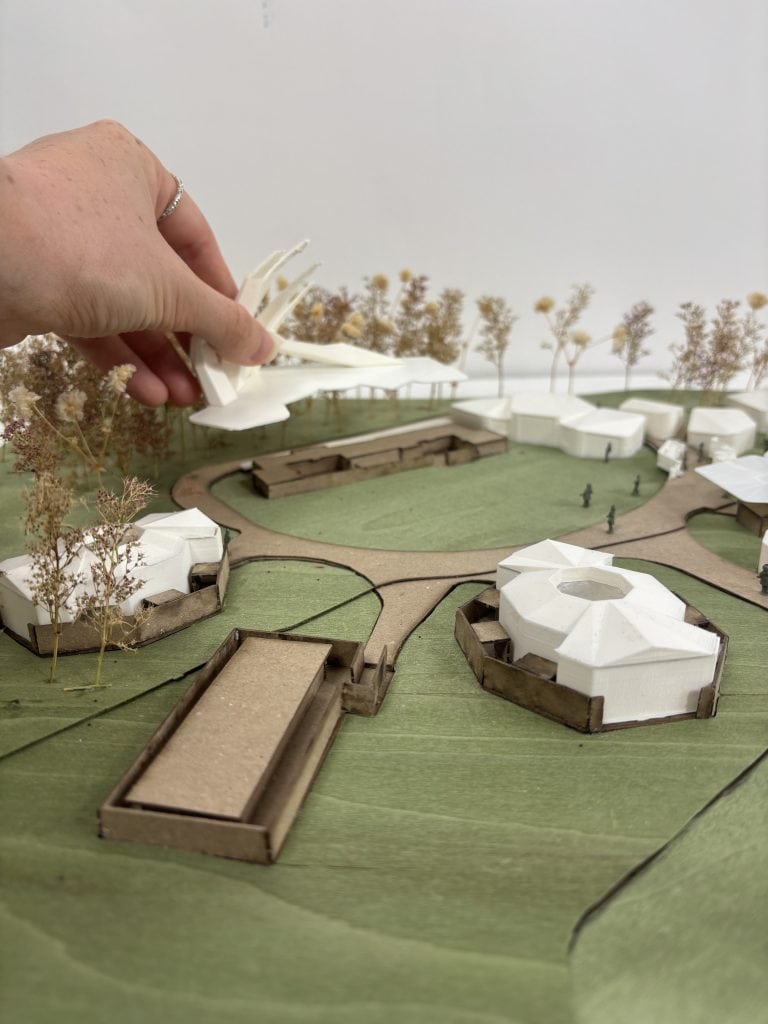Sign Language, Shared Landscapes: Reimagining Lavernock Battery for the BSL Festival
A Contemporary Lens on Neuroarchitecture and Inclusive Design
In the ever-evolving field of interior design, few emerging voices strike a chord quite like Rebecca Stinchcombe. A recent graduate distinguished by her commanding grasp of inclusive, sustainable, and human-centred environments, Stinchcombe’s design philosophy is deeply influenced by the principles of neuroarchitecture—an approach that champions the psychological and sensory impact of built spaces on human well-being.
Stinchcombe’s journey to interior design atypically began within the structures of Ministry of Defence Policing, an experience that cultivated sharp problem-solving, impeccable communication, and collaborative leadership. These skills, now translated into her academic and professional creativity, have drawn recognition: she is a Women in Property Student Award finalist and the recipient of the prestigious ARUP Accommodation Award.
Her latest project—an inspired intervention at the historic Lavernock Battery—marks a significant confluence of history, culture, and sensory design.
Reviving History: Lavernock Battery as a Stage for Deaf Culture
The windswept headlands of Lavernock, Wales, have already etched their place in the annals of technological history as the site of Marconi’s first wireless transmission across open sea. In Stinchcombe’s reimagining, this coastal stronghold becomes ground zero for a fresh kind of transmission: one of language, identity, and inclusivity. The project proposes a transformation of the site into the host venue for the British Sign Language (BSL) Festival—a multi-day celebration elevating Deaf culture through vibrant performance and participation.
For Stinchcombe, site selection was far from arbitrary. The walls of Lavernock Battery have borne witness to moments of communication that reverberated internationally. In turning this narrative towards British Sign Language, Stinchcombe both honours and subverts the site’s legacy: wireless signals are replaced with the richly expressive, visible language of the Deaf community, promoting connection not through technology alone, but through shared space, body, and movement.
Temporary Structures, Permanent Impact
At the heart of Stinchcombe’s proposal are temporary, biodegradable structures that echo both the rhythms of the landscape and the kinetic forms of BSL. These lightweight, modular pavilions—constructed using sustainable materials such as bamboo, bioplastic sheeting, and textile membranes—are designed to be fully deconstructible and repurposable. Such a strategy ensures that the festival leaves no lasting scar upon the historic site, embodying a sensitive conversation between old and new.
The forms themselves appear to grow directly from the earth, organic in silhouette and orientation. Some evoke the arc of an open hand, others the gentle undulation of spoken gestures, captured and made architectural. The result is a network of interconnected spaces: open-air performance amphitheatres, sensory-rest zones, tactile art installations, and flexible workshop pods. Wide, level pathways and intuitive navigation create seamless barrier-free access, while visual cues and contrasting textures support wayfinding for neurodivergent and visually impaired visitors.
Neuroarchitecture in Practice: A Sensory-Centric Design Ethos
Stinchcombe’s grounding in neuroarchitecture is most evident in the sophisticated attention given to sensory experience and psychological well-being. Recognising that large-scale events can often overwhelm, her festival design inserts moments of retreat and regulation into the festival’s social tapestry. Soft, diffusive lighting tempers the harshness of the coastal sun; gentle soundscapes and tactile interventions offer grounding for those who may find the bustle of crowds or the complexity of environments overstimulating.
Festival workshops embrace multisensory engagement, encouraging visitors to explore BSL through movement, sculpture, and collaborative art. Quiet zones with acoustic dampening allow space for individual processing, while performance spaces are arranged in the round—a deliberate challenge to the hierarchical dynamics of traditional theatre, placing performers and audiences in more direct, reciprocal communion.
Global Reach: Broadcasting Culture Without Boundaries
True to the inclusive spirit of the BSL Festival, participation is never limited by geography. Events are broadcast globally, bridging physical distance and meeting the needs of those for whom travel is challenging. This digital extension fosters cultural exchange, creates international awareness, and builds pride within and beyond the Deaf community.
What truly distinguishes the project is its refusal to treat accessibility as an afterthought. Instead, accessibility is foundational and celebratory, woven through the project at every level—from spatial layout to structural composition and programming. Stinchcombe’s sensitivity to the diverse sensory needs of her audience not only enriches the festival atmosphere but models an approach that many established design practices could emulate.
Beyond the Festival: Rethinking Engagement and Legacy
Stinchcombe’s project offers a thoughtful response to a contemporary challenge: how can temporary cultural interventions meaningfully engage site, history, and community, while also advocating for more inclusive futures in design? Her solution is quietly radical. By harnessing the poetic potential of space—the way it feels, the way it guides, the way it remembers—Stinchcombe demonstrates that architecture and interior design can become vehicles for empowerment and pride.
Her work, too, resonates beyond the realm of festivals. Through her podcast, which explores the psychological impact of built environments in small dwellings, Stinchcombe continues to probe the intersections of space, identity, and well-being, pushing the dialogue around neuroarchitecture into wide, accessible territory.
Connect With Rebecca Stinchcombe
Rebecca Stinchcombe exemplifies the next wave of designers redefining what inclusive, sustainable, and emotionally intelligent spaces can be. Readers who wish to discuss her work further, collaborate, or delve into her broader explorations of neuroarchitecture are warmly encouraged to connect. Find Rebecca on LinkedIn or follow her creative journey on Instagram at @stinch_studios_.
Her evolving portfolio stands as an invitation—to designers, festival makers, and communities alike—to reimagine how built environments can foster connection, pride, and a profound sense of belonging.












Add a comment